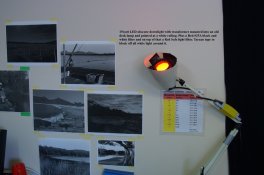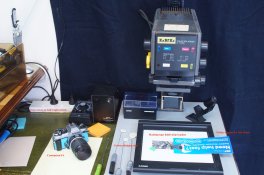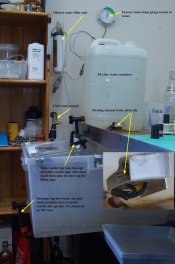How do your workflows in the darkroom look? This is what I was doing:
Expose contact sheet, develop, fix, rinse.
Turn on lights, dry with blow drier and see which negatives I might want to print. The contact sheet also gives me an idea of which contrast filter I want to use.
Choose a negative, decide on magnification, cropping, expose a test strip. Develop, fix, rinse, realize the whole thing is over exposed. Expose a new test strip stopped down. Develop, fix, rinse.
Turn on lights, dry with blow drier, determine optimum exposure.
Expose at that exposure, develop, fix, wash, hang to dry.
Then do it all again for another frame.
Does this sound right? Is there anything I can do to make it more efficient? I bet the more I do it, the better I will get. I used to be much quicker when I was at school, but it was a much more convenient layout there.
I also tried processing multiple prints at the same time (something I have done before with good success) but this time they all stuck together and I couldn’t get them apart to interleave them while processing and as a result some turned out pretty bad. It all made for a pretty stressful processing experience, so I won’t be doing that again.
I figure my paper dev is still good for a short while so I’ll try again tonight. Cutting paper took up a big portion of my time last night, so hopefully things will go quicker this time.













 .
.